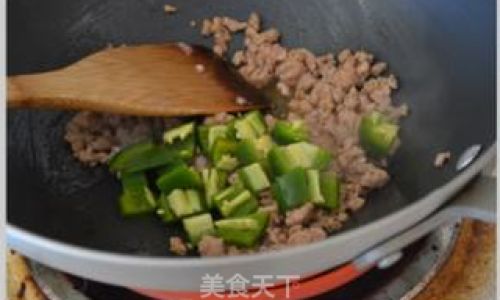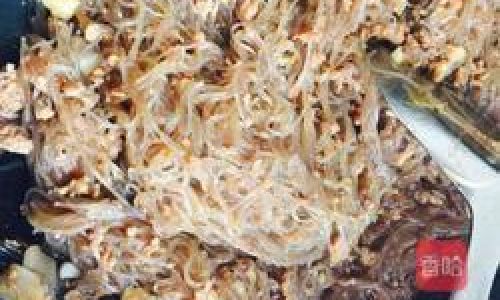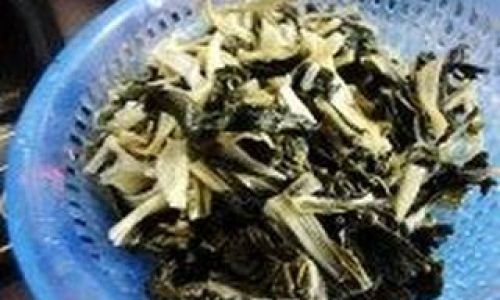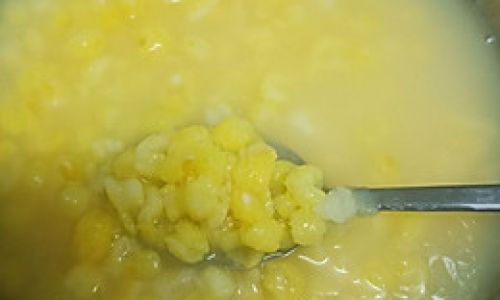Table of content
Sichuan cuisine, renowned for its bold flavors and fiery kick, has gifted the world with countless dishes that tantalize the taste buds. Among these, Ma Yi Shang Shu—or “Ants Climbing a Tree”—stands out as a whimsically named yet deeply satisfying creation. This dish, which pairs slippery glass noodles with minced meat clinging to them like ants ascending a tree, is a testament to Sichuan’s ability to blend texture, spice, and umami into a single bowl. Below, we explore the art of preparing this beloved dish, from selecting ingredients to mastering the balance of flavors that define Sichuan’s culinary identity.
The Origin and Cultural Significance
The dish’s unusual name sparks curiosity, but its origins are rooted in simplicity and resourcefulness. Legend has it that the name emerged from the visual resemblance of the minced meat (the “ants”) adhering to the translucent noodles (the “tree”). Despite its playful moniker, Ants Climbing a Tree is a staple in Sichuanese households, prized for its affordability and ability to satisfy hunger with minimal ingredients. Traditionally made with ground pork, mung bean noodles, and a medley of aromatics, it exemplifies the Sichuan philosophy of transforming humble components into a symphony of taste.
Ingredients: Building Blocks of Flavor
To recreate this dish authentically, gathering the right ingredients is crucial. Here’s a breakdown of what you’ll need:
For the Noodles
- 200g mung bean glass noodles: These translucent, chewy noodles are the dish’s backbone. Soak them in warm water for 30 minutes until pliable, then drain and snip into 15cm lengths to prevent clumping.
For the Aromatic Base
- 150g ground pork (or beef): Opt for meat with a 20% fat ratio for richness.
- 3 tbsp vegetable oil: Use a neutral oil like rapeseed or peanut.
- 2 tbsp Sichuan fermented black bean paste (doubanjiang): This fermented chili paste is the dish’s soul—seek out a brand with a deep red hue and robust, salty-spicy aroma.
- 1 tbsp Sichuan peppercorns, toasted and ground: These provide the signature numbing heat (ma).
- 4 garlic cloves, minced
- 1-inch ginger, grated
- 2 scallions, white and green parts separated, thinly sliced
For the Sauce
- 3 tbsp light soy sauce
- 1 tbsp dark soy sauce (for color)
- 1 tbsp Chinkiang vinegar (black vinegar)
- 1 tsp sugar
- 1 tsp sesame oil
- ¼ cup chicken broth (or water)
Garnishes and Enhancements
- 1 tbsp chili oil (optional, for extra heat)
- Handful of fresh cilantro, chopped
- 1 red chili, thinly sliced (for color)
Step-by-Step Preparation
Preparing the Noodles
Soak the glass noodles in a large bowl of warm water for 25–30 minutes. Drain thoroughly and toss with 1 tbsp of vegetable oil to prevent sticking. Set aside.

Cooking the Aromatics and Meat
Heat a wok or large skillet over high heat until smoking. Add 2 tbsp of oil, then swirl to coat the pan. Toss in the ground pork, using a spatula to break it into small pieces. Cook for 4–5 minutes until browned and crispy. Reduce heat to medium, then add the Sichuan peppercorn powder, garlic, ginger, and white parts of the scallions. Stir-fry for 1–2 minutes until fragrant.
Building the Sauce
Push the meat to one side of the wok and add the black bean paste to the empty space. Fry for 30 seconds to release its aromatics, then mix it into the meat. Pour in the light soy sauce, dark soy sauce, vinegar, sugar, and sesame oil. Stir vigorously to combine, then add the chicken broth. Simmer for 2–3 minutes to meld the flavors.
Combining Noodles and Sauce
Add the drained noodles to the wok, using tongs to toss them gently in the sauce. Ensure the noodles are evenly coated—they should absorb the liquid and turn a glossy brown. If the mixture seems dry, splash in a tablespoon of water. Cook for 3–4 minutes until the noodles are tender but still chewy.
Final Touches
Drizzle with chili oil (if using) and toss once more. Transfer to a serving dish and garnish with cilantro, sliced red chili, and the green scallion tops. Serve immediately with steamed rice.
Mastering the Flavor Balance
The true art of Ants Climbing a Tree lies in harmonizing its five key elements:

- Spicy: From the black bean paste and optional chili oil.
- Numbing: Courtesy of the Sichuan peppercorns.
- Umami: The fermented beans and soy sauces provide depth.
- Tang: Chinkiang vinegar adds a bright, acidic counterpoint.
- Savory: The caramelized meat and broth round out the profile.
Adjust the seasoning to taste: a pinch more sugar can temper heat, while an extra splash of vinegar brightens the dish.
Variations and Tips
- Vegetarian Adaptation: Substitute the meat with minced mushrooms or textured vegetable protein (TVP). Enhance umami with a splash of mushroom soy sauce.
- Protein Swaps: Use ground turkey or chicken for a leaner version, or diced shrimp for a seafood twist.
- Texture Play: Add julienned carrots or bell peppers during the final toss for crunch.
- Authenticity Check: For the most authentic taste, seek out pixian doubanjiang—a aged chili bean paste from Pixian County, Sichuan.
Serving Suggestions
This dish shines as a standalone meal or as part of a larger Sichuan feast. Pair it with:
- Steamed Jasmine Rice: To temper the spice.
- Cucumber Salad: A refreshing counterpoint.
- Sichuan Pickled Vegetables: For a tangy, crunchy side.
The Cultural Tapestry of Sichuan Cuisine
Ants Climbing a Tree is more than a recipe—it’s a microcosm of Sichuan’s culinary ethos. Born from necessity, it reflects the region’s history of innovation and adaptability. The dish’s ability to elevate simple ingredients into something extraordinary mirrors Sichuan’s resilience, a trait honed through centuries of cultural exchange and environmental challenges.
Conclusion
Crafting Sichuan-Style Ants Climbing a Tree is an exercise in patience and precision. While the ingredient list may seem daunting, the process is forgiving, allowing for creativity within tradition. Whether you’re a seasoned cook or a curious novice, this dish offers a gateway to the vibrant world of Sichuan flavors. So, gather your wok, sharpen your knives, and prepare to embark on a culinary journey where ants truly do climb trees—one savory, spicy, and utterly unforgettable bite at a time.






0 comments